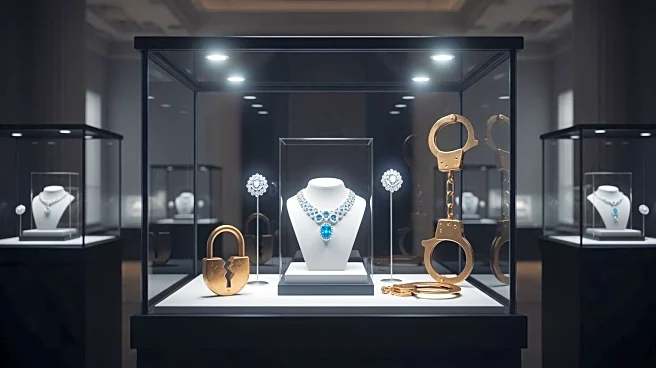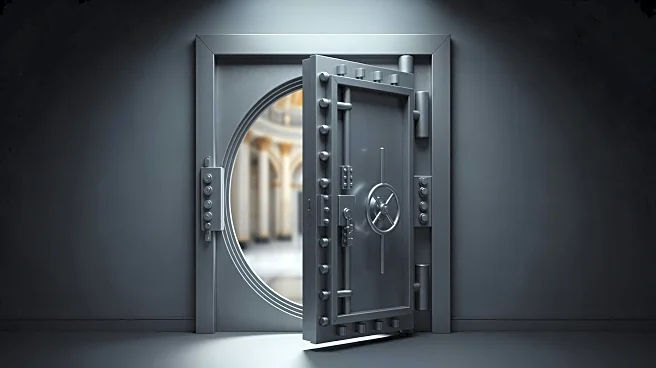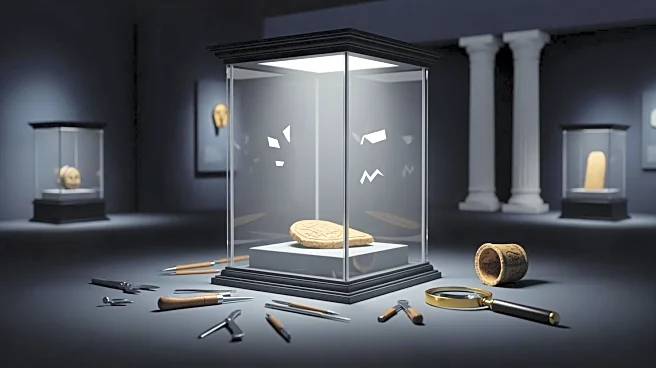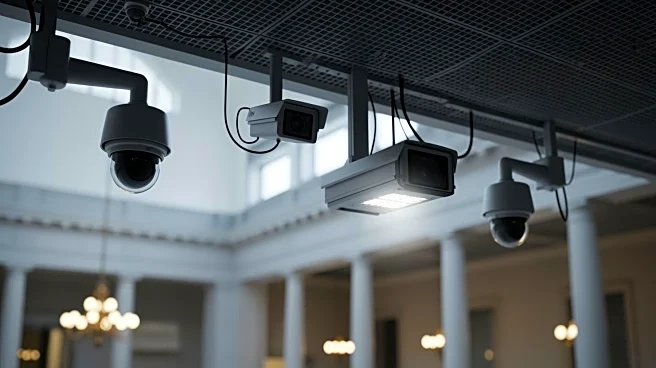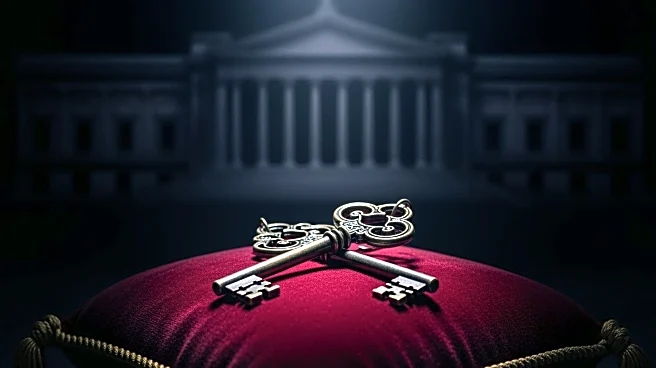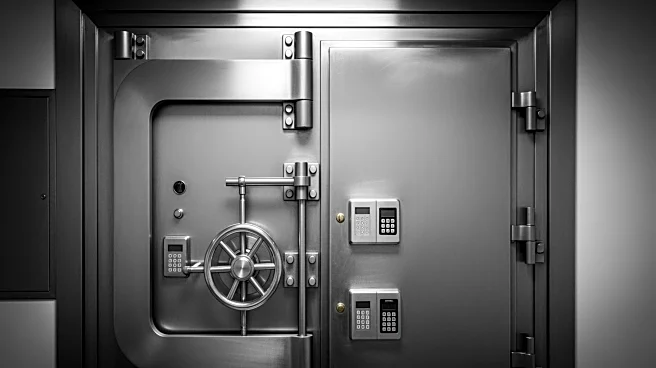What's Happening?
French authorities have made significant progress in the investigation of a daring heist at the Louvre Museum, where four masked thieves stole eight pieces of jewelry valued at $102 million. The theft occurred on October 19, 2025, and took only seven
minutes to execute. The thieves used a truck with an extendable ladder to access a second-floor balcony, then cut through a window to enter the museum's Apollo Gallery. They smashed display cases and stole jewelry belonging to Emperor Napoleon and his wife. The museum's alarm was triggered, but the thieves managed to escape on motorbikes. In their haste, they dropped a crown adorned with over a thousand diamonds, which was later recovered but damaged. French police have arrested two suspects, one at Paris Charles de Gaulle Airport and another as he was about to travel to Mali. The investigation continues as authorities search for the remaining perpetrators.
Why It's Important?
The Louvre heist has sparked a national outcry in France and raised questions about the security measures at one of the world's most renowned museums. The theft of such high-value items not only represents a significant cultural loss but also highlights vulnerabilities in museum security systems. The incident has implications for museum security protocols worldwide, as institutions may need to reassess their measures to prevent similar occurrences. The recovery of the stolen items is crucial for preserving cultural heritage, and the arrests mark a step forward in achieving justice. The ongoing investigation and manhunt for the remaining suspects underscore the challenges law enforcement faces in dealing with sophisticated criminal operations.
What's Next?
As the investigation progresses, French authorities are likely to intensify their efforts to locate the remaining suspects and recover the stolen jewelry. The arrests may lead to further breakthroughs, potentially uncovering more details about the planning and execution of the heist. Museums globally may review and enhance their security protocols in response to this incident. The cultural sector will be closely monitoring the situation, as the outcome could influence future security investments and strategies. Additionally, the legal proceedings against the arrested suspects will be of interest, as they may provide insights into the criminal network involved.
Beyond the Headlines
The Louvre heist raises broader questions about the protection of cultural assets and the role of technology in museum security. The use of advanced tools like angle grinders and the quick execution of the theft suggest a high level of planning and expertise. This incident may prompt discussions on the balance between public access to cultural sites and the need for stringent security measures. Furthermore, the heist could lead to increased collaboration between international law enforcement agencies to combat art theft, which remains a significant issue in the global art market.


